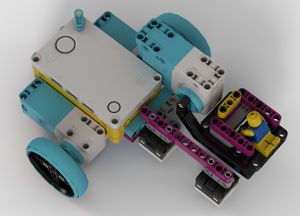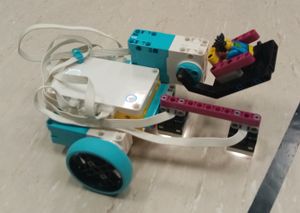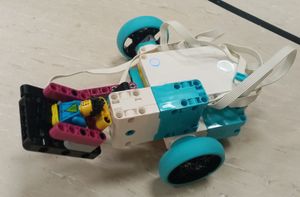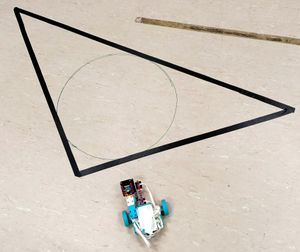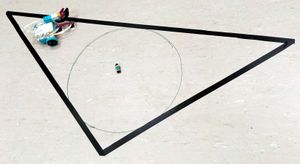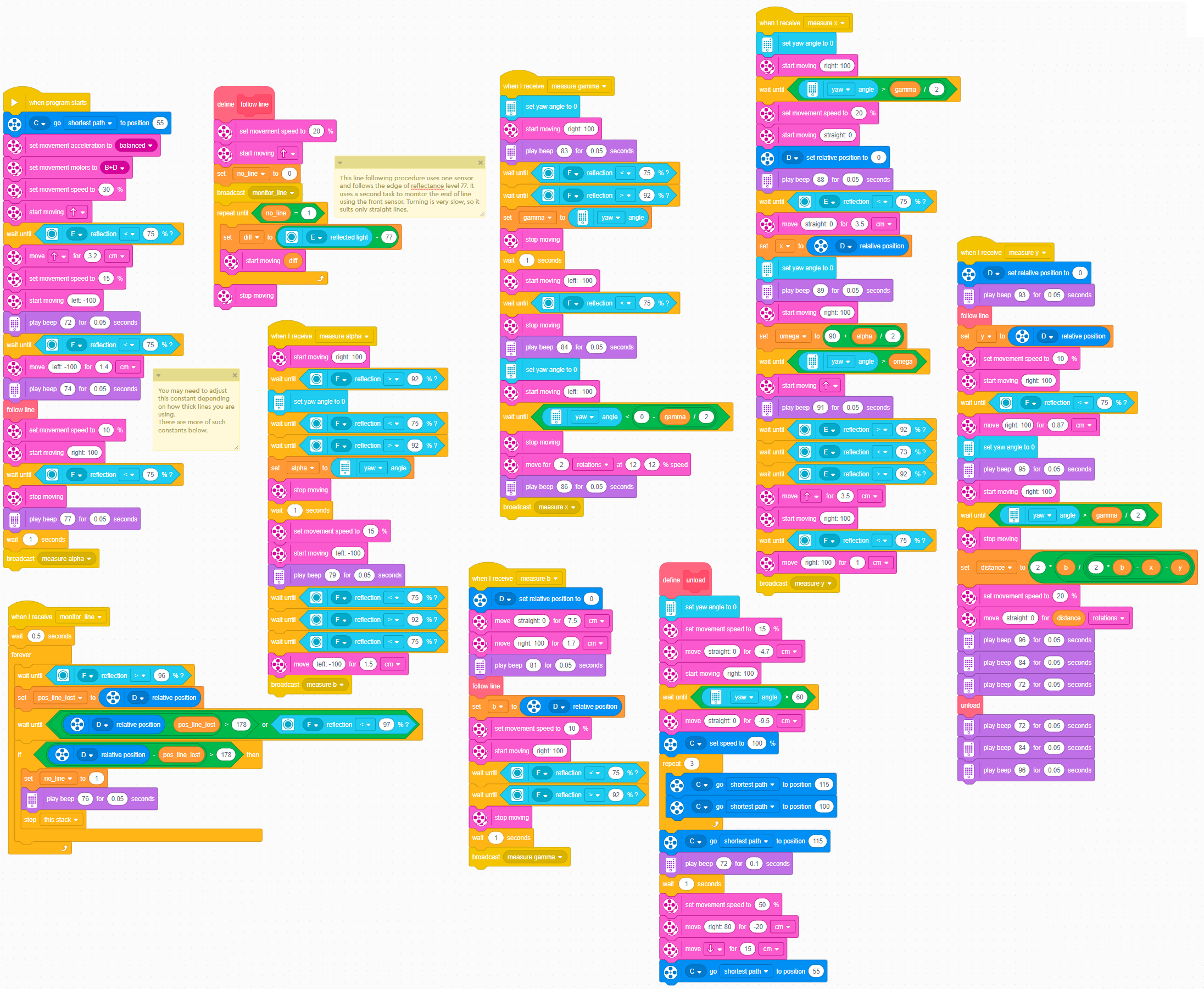Spike Prime - Center of Inscribed Circle of Triangle
From RoboWiki
Let's begin
This activity is using the same robot as the Intersection activity.
Note: this robot requires one additional color/light sensor (two in total). Drawing...
Build
Model:
Pictures:
Building instructions:
Download building instructions:
Download stud.io model:
...description...
Connections:
- left motor - B
- large motor - C
- right motor - D
- closer light sensor - E
- front light sensor - F
Programs
Download:
...description...
- go fwd until you hit an edge
- turn left along the side and follow until the vertex A
- turn right along the side AC, measure the angle BAC (alpha) while turning
- follow side AC until the vertex C, measure side length (b)
- turn right in the direction of bisector of angle ACB (gamma)
- travel 1 rotation forward, then in this point U turn to be parallel with line b (gamma/2 right)
- travel until hit the side c to point V, measure length of line segment UV (x)
- turn right 90+alpha towards line b, travel until you hit line b (point W), then turn right along side b
- travel until point C, measure the distance WC (y)
- calculation: by travelling 1 rotation from C to U, the length of side AC descreased to
UV - WA = UV - (AC - WC) = UV + WC - AC = x + y - b
therefore, travelling from C the distance d = b / (2b - x - y) leads to point O - in point B, turn right in the direction of bisector of angle ACB
- travel d rotations forward to arrive at destination.
Measure, analyze, think
- Make your own recording
- Perform experiments with your model and discuss in your group what has happened.
Explore and modify
- Pick one of the three versions, build it
- Make your own drawing of the gear systems (i.e. on paper)
- Write down the numbers of teeth on each pair of the gear wheels
- Figure out the ratio of each pair of gear wheels
- Make or calculate your guess about the final ratio of gear wheels
- Perform measurement with the model and program and compare
- Try to invent some other combinations of gears, repeat the whole procedure with them (this can be an alternative project for an advanced group instead of the above)
- Could you list all the possible combinations using these 8 gear wheels that could be built?
Present
Additional resources
